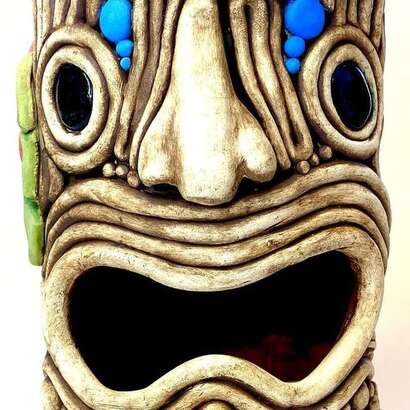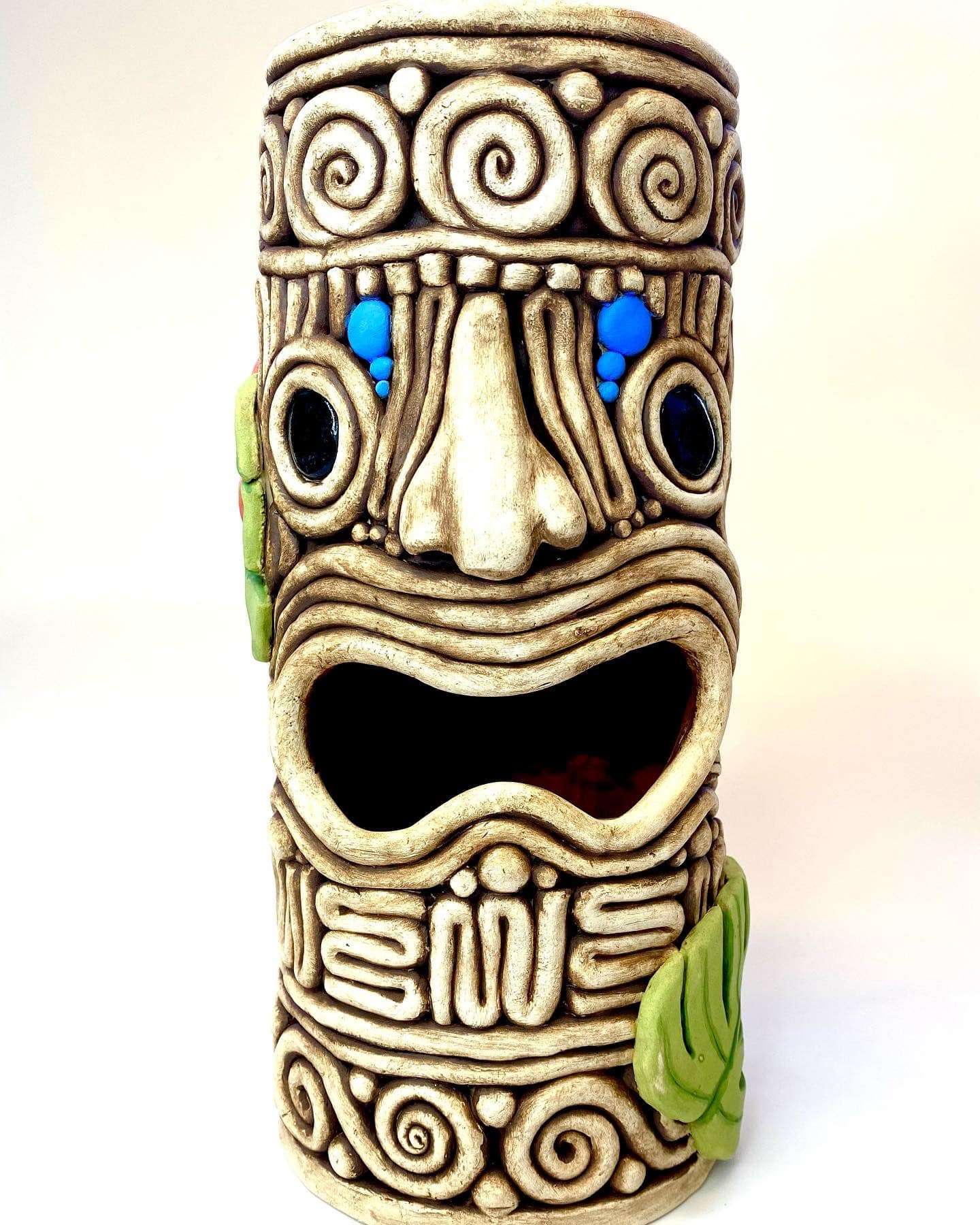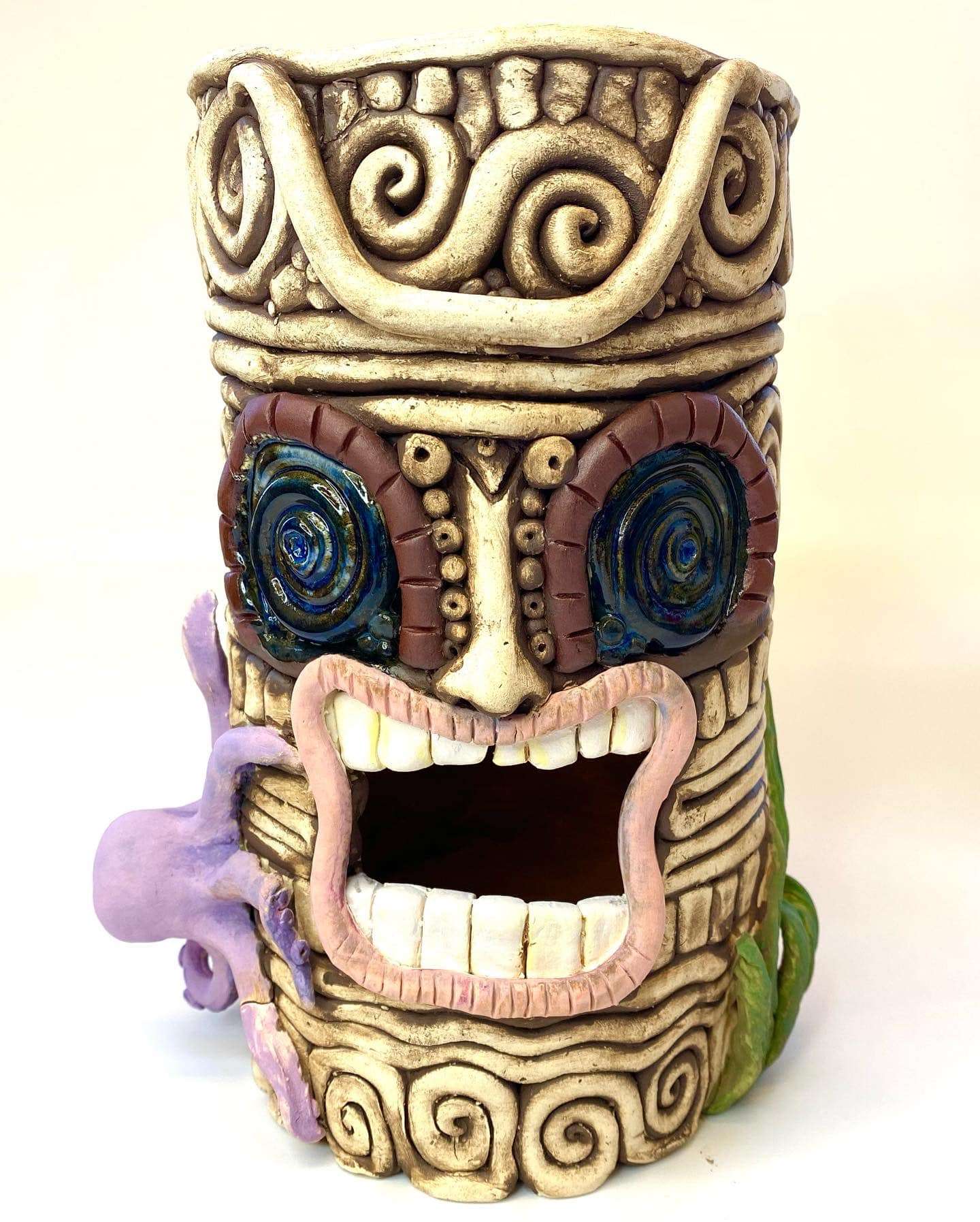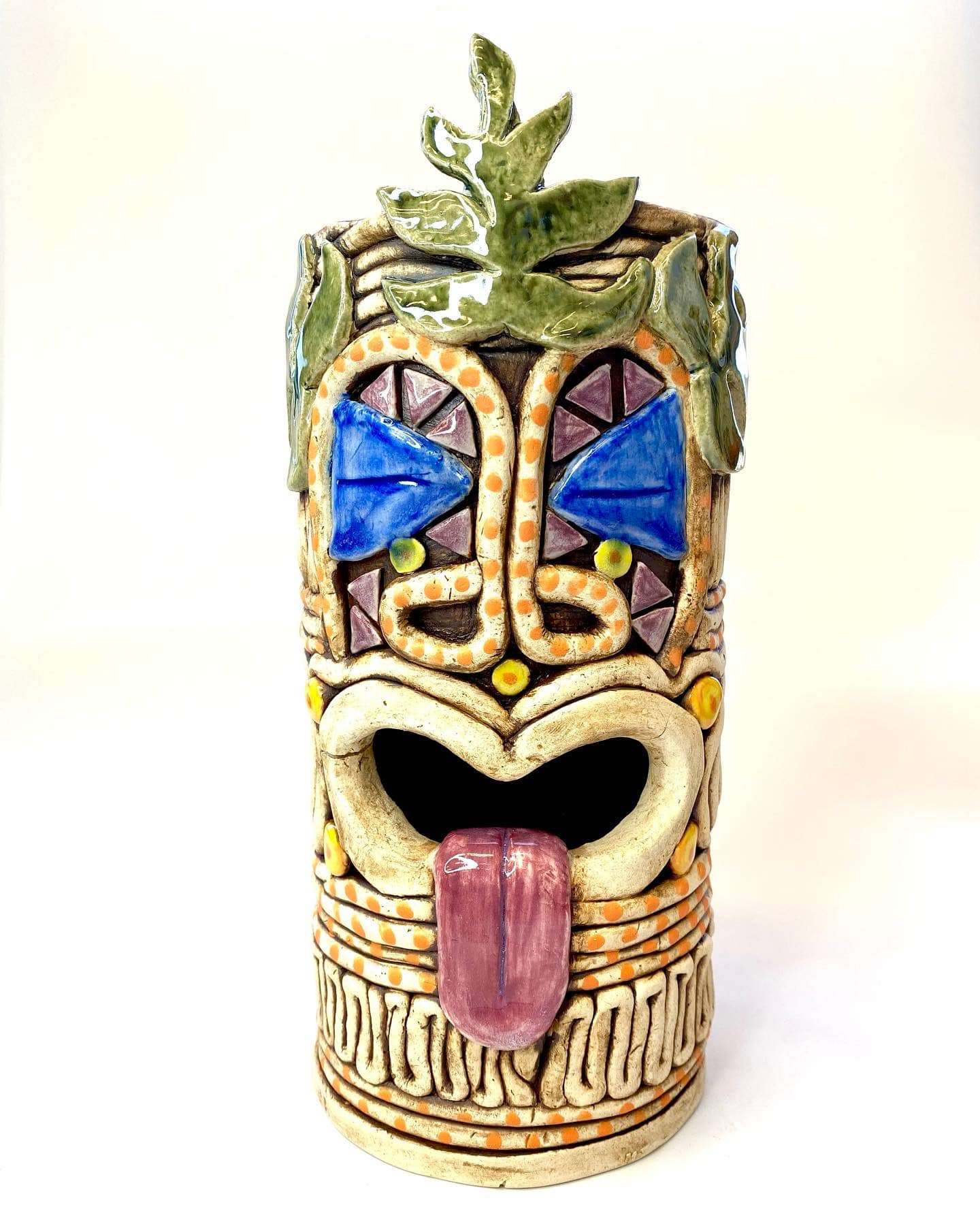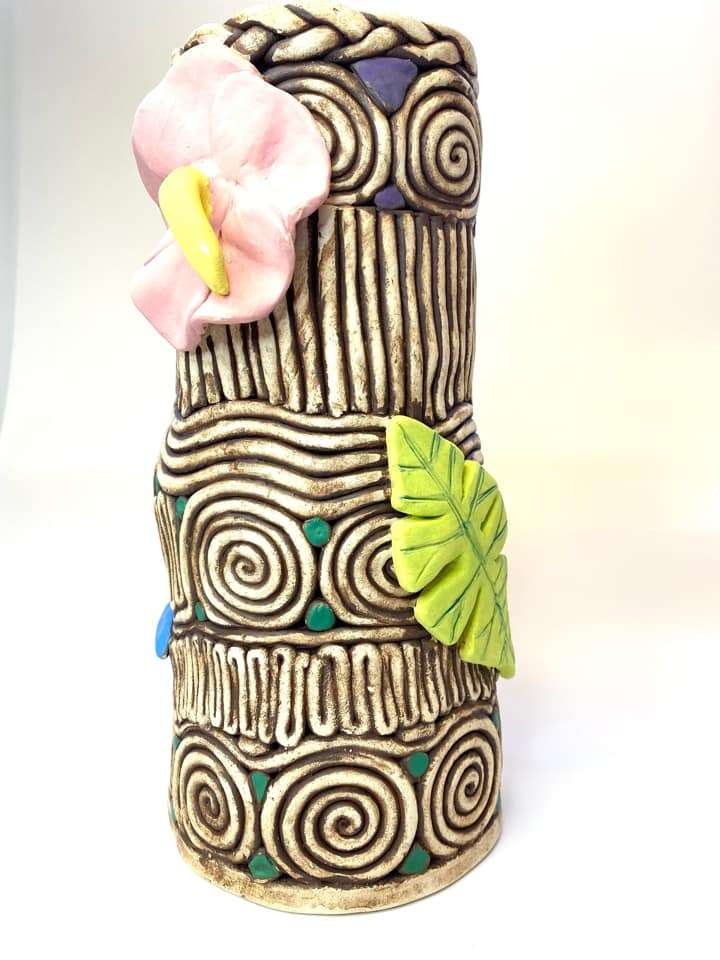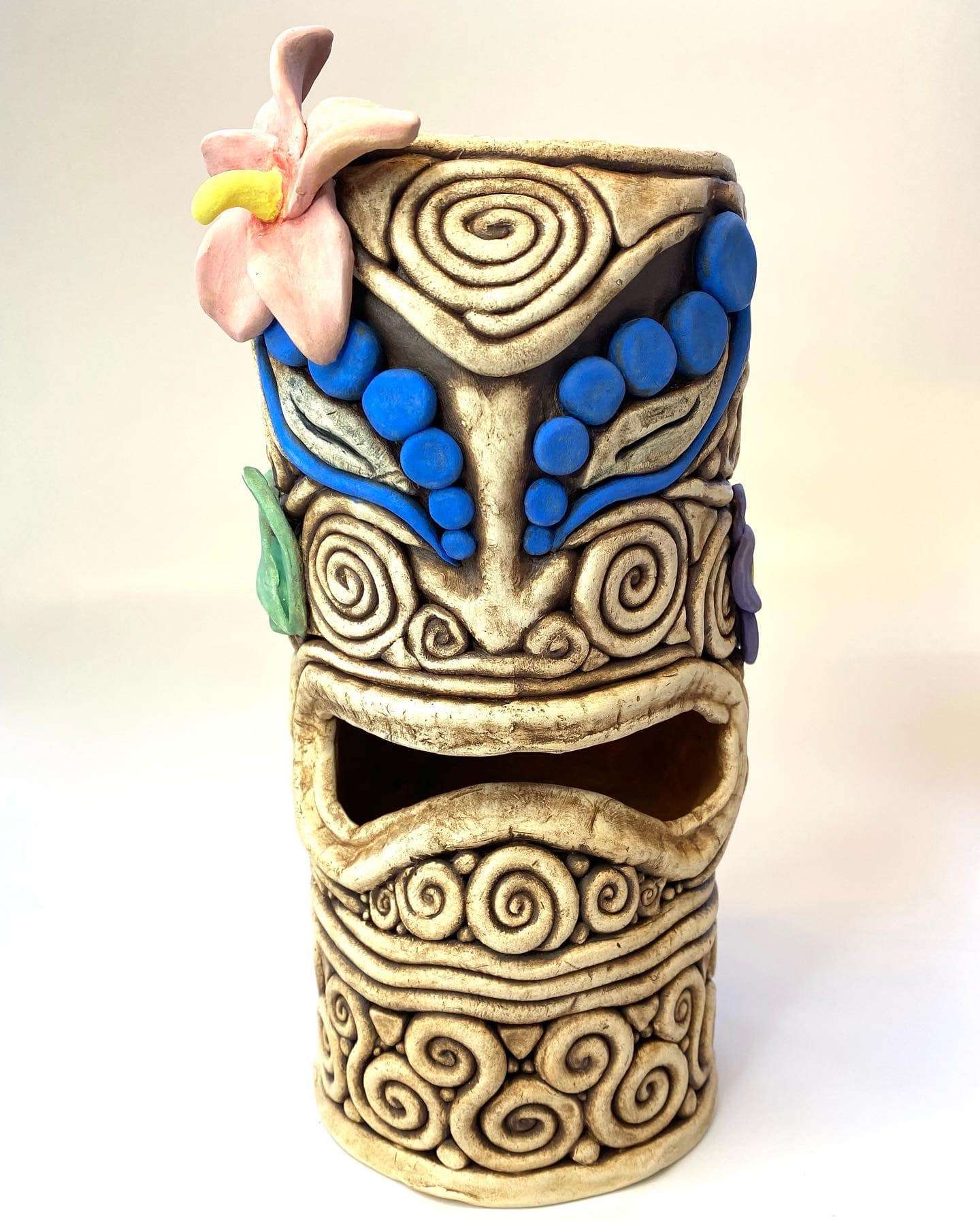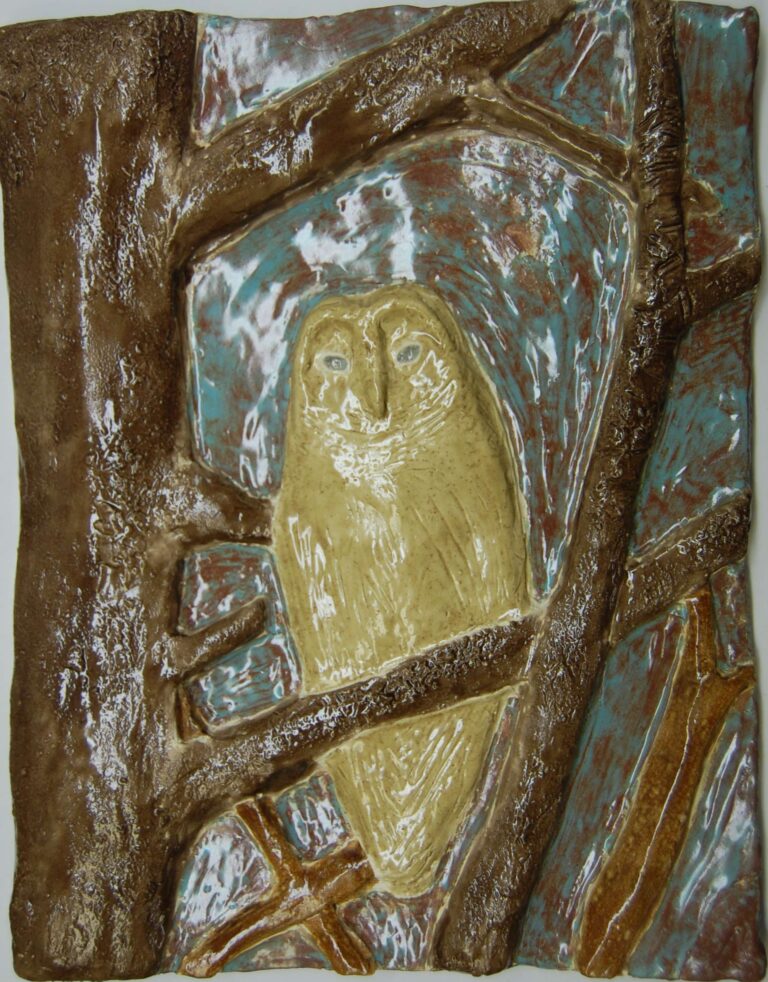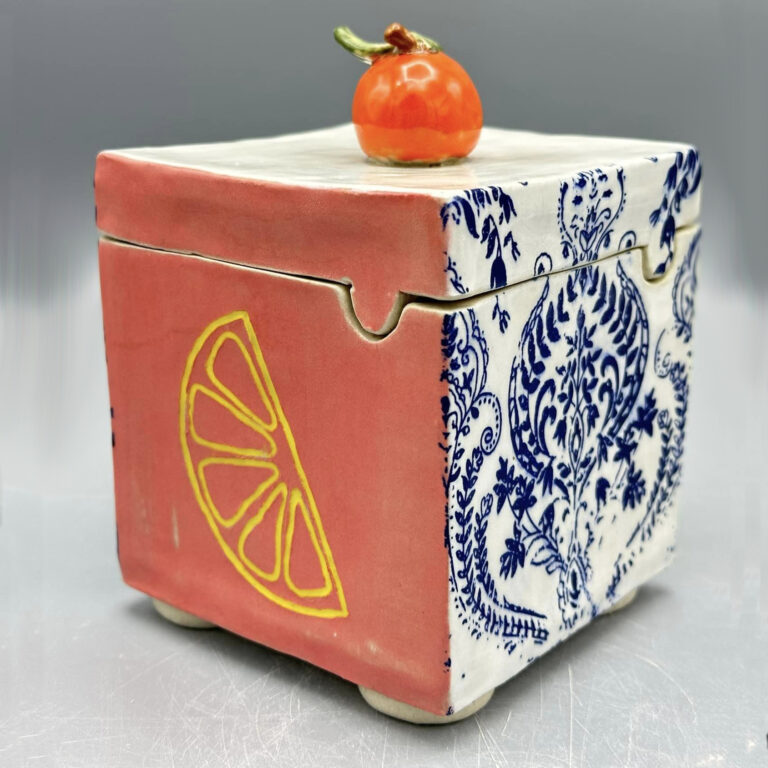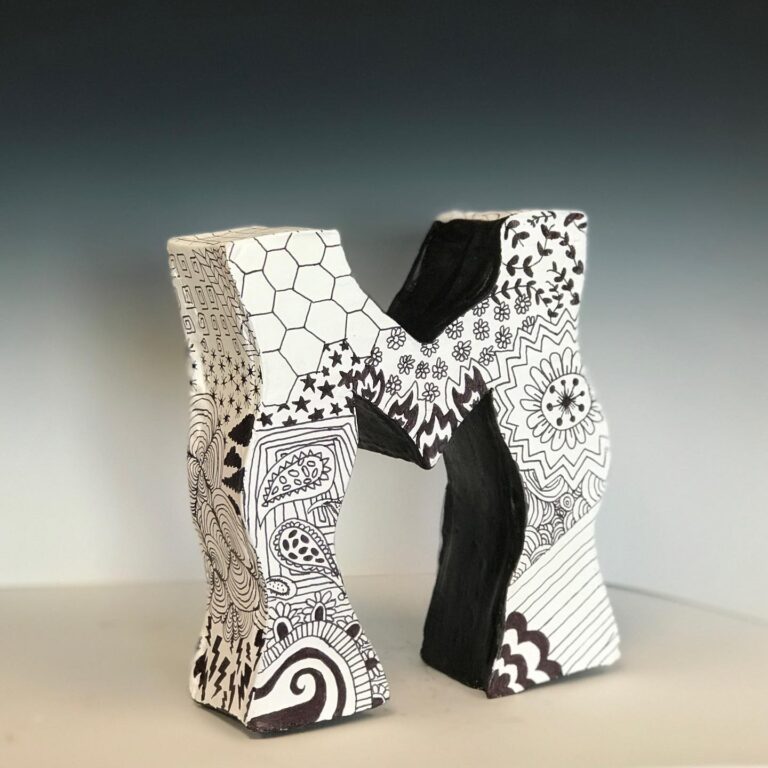Grade Level
9-10, 11-12Duration
3 weeks for construction with an every other day 90 minute block schedule, 1 additional week for glazing
Materials
Clay, clay tools, access to a kiln for firing, underglaze, glazes, brushes
Media
Clay
Lesson Objectives
For the student to…
understand the concept of cultural appropriation versus cultural appreciation.
understand the history of Tiki sculptures as a Hawaiian invention.
construct their own quality Tiki-inspired creation from clay coils.
finish with appropriate underglaze and glaze color options.
Introductory Activity
You can find a slide show the author uses for this lesson linked in the list of resources. The lesson and slide show start with defining and discussing cultural appropriation. A short history is given and includes defining Tiki as it relates to Polynesia. Such carvings were first discovered in Polynesia, and tiki carvings are said to represent a Polynesian God. Tiki is also called Ki’i in Hawaiian and the more modern representations of Tiki emerged from western culture. While this lesson is based on Hawaiian and Western inventions, it is important the teacher feels well-grounded in the nuanced differences between cultural appropriation, cultural appreciation in addition to the historical role of tiki in pop culture.
Tiki as we know it simply doesn’t exist. The Tiki that we know today was created by entrepreneurs and was so far removed we don’t/shouldn’t call it Tiki. As a result of colonialism, we have virtually erased what we know of Polynesian wood carvings. What we see today is actually taken from the appropriated tiki culture. So it is very important to the teacher who created this lesson that the sculptures are not identified “as something that simply does not exist in traditional Polynesian woodcarvings.”
Lesson Process
The students should be introduced to coil rolling as a hand-building technique and should practice rolling coils the thickness of a pencil until they feel confident. Next, demonstrate how to build with coils by slipping and scoring. Also, demonstrate how to create different coils for decoratively. Review the below requirements for the sculpture.
Requirements:
• At least 1 row of IDENTICAL coils. See teacher if confused.
• Coils are well defined with no cracks. (See example)
• No drawn spirals, No building balls.
• Height is NO LESS than 10 inches
• Inside is covered with thin slabs and smoothed. (See example)
• You MUST have no less than 3 non-coil elements. (See Example)
• Tropical Face/Mouth has structural integrity and no warping
• Coils are TIGHTLY next to each other or filled in with SMALL balls
• Pencil Thick Coils
Students should look for resource imagery for inspiration and develop an original sketch to reference in the construction process. As the sketch is being developed they need to keep the requirements in mind.
After the pieces are fired, they are finished by applying underglaze only in cracks and wiping away. The color sinks into the recessed areas highlighting the texture and form. More wiping will lift more underglaze and reveal more white. Other decorative areas use glazes for accent color. All underglazes have a clear glaze applied to seal and add shine.
Vocabulary
slab, blend, coil, wedging, Firing, bisque, glaze, tiki, Ki’i, cultural appropriation, cultural appreciation, underglazeResources
How to roll a coil YouTube video
Wiping away underglaze effect
Presentation for Personal Polynesian Inspired Coil Sculpture
Author & Website/Blog
Augustina Matsui
Supporting Images

